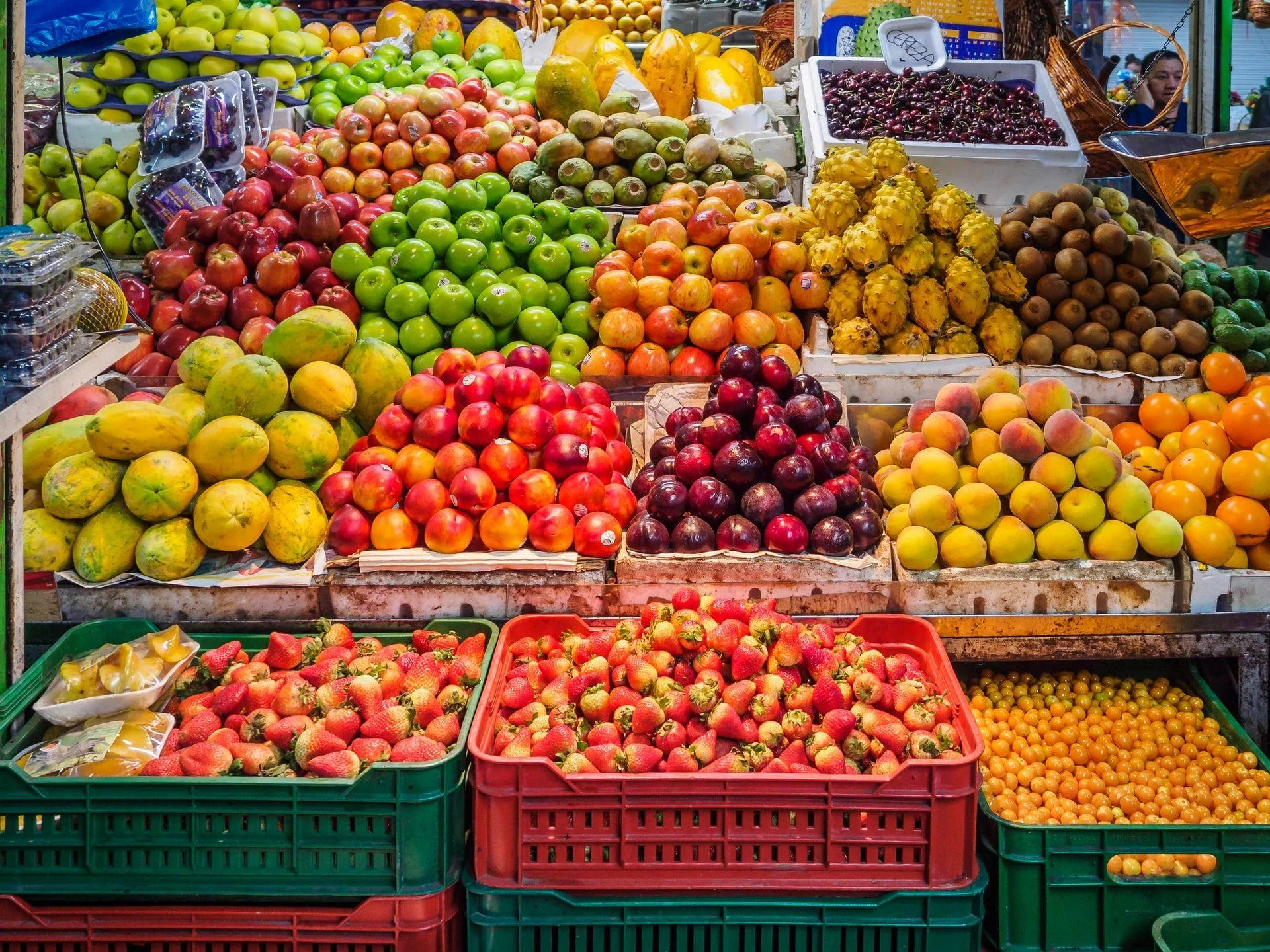Healthy dietary habits are important for a healthy lifestyle, but with so many diet plans out there, how can you decide which is best for you? Well, one thing that these various eating plans have in common is their inclusivity of fruits and vegetables, which is why so many nutritionists encourage us to ‘eat the rainbow.’
Longevity Benefits of Eating The Rainbow
The “rainbow” refers to the colors of fruits and vegetables that are a result of the presence of phytonutrients, which are chemical compounds that give fruits and vegetables their hues as well as their benefits.
Not only does eating a rainbow of fruit and vegetables looks nice on your plate, but each color can benefit your health in many ways.
1. Red
Red fruits and vegetables get their hue from carotenoids, which are a type of phytonutrient, such as lycopene and anthocyanin.
Lycopene, found in red apples and tomatoes, is more popularly known for its impact on men’s health. According to one study published in Frontiers in Public Health, an adequate intake of lycopene was associated with a decreased risk for non-hispanic black prostate cancer.
Lycopene isn’t just beneficial for men. Osteoporosis is a bone disease that weakens bones, leading to an increased risk for fractures, and is more prominent in women. Per findings published in the Journal of Translational Medicine, lycopene contributed to prevent bone loss in postmenopausal women.
Anthocyanins, found in all our favourite berries – raspberries, strawberries, and cranberries – have also been found to promote longevity thanks to its antidiabetic, anticancer, anti-inflammatory, antimicrobial, and anti-obesity effects.
2. Orange
A fan of carrots, pumpkins, apricots, mandarins, and oranges?
If so, you may be happy to hear that they get their orange color from alpha and beta-carotene, which is great for your health and longevity.
Once consumed, alpha and beta-carotene are converted to vitamin A in our bodies, which is a vital nutrient needed for healthier eyes, a stronger immune system and healthy growth and reproduction.
3. Yellow
For those looking to add more yellow to their plate, here’s a great reason as to why you should get started.
Yellow fruit and vegetables, like bananas, lemons, pineapples and pears, contain lutein, zeaxanthin, and meso-zeaxanthin.
These compounds have been recognized as essential for healthy vision as they can These are found in apples, pears, bananas, lemons, and pineapple.
Lutein, meso-zeaxanthin, and zeaxanthin have been shown to be particularly important for eye health as they can reduce the risk of age-related macular degeneration.
4. Green
Avocados, kiwis, cabbage, spinach, celery, and cucumbers have chlorophyll to thank for their green color.
Thanks to its detoxifying properties, chlorophyll has been found to prevent or delay neurodegenerative conditions by helping to eliminate toxins and pollutants that have accumulated in the brain.
5. Blue and purple
Similar to red produce, blackberries, blueberries, figs, prunes, and purple grapes each get their purple hue from anthocyanins.
As mentioned, anthocyanins are powerful antioxidants that serve to promote longevity by combatting free radicals, thus reducing the risk for heart disease and neurological conditions.
How can I eat the rainbow?
If you’re hoping to promote longevity through your eating habits, then you need to start eating the rainbow. So, how to achieve this?
For one, try incorporating new fruits and vegetables into your grocery shopping to pique your interest. Once you’ve done that, try to keep fruit where you can see it, such as in a bowl near the kitchen or on your desk. Also, try to have a fruit every morning for breakfast and to always have a serving of vegetables either at lunch or dinner.
References
Khoo HE, Azlan A, Tang ST, Lim SM. Anthocyanidins and anthocyanins: colored pigments as food, pharmaceutical ingredients, and the potential health benefits. Food Nutr Res. 2017 Aug 13;61(1):1361779. doi: 10.1080/16546628.2017.1361779. PMID: 28970777; PMCID: PMC5613902.
Lu Y, Edwards A, Chen Z, Tseng TS, Li M, Gonzalez GV, Zhang K. Insufficient Lycopene Intake Is Associated With High Risk of Prostate Cancer: A Cross-Sectional Study From the National Health and Nutrition Examination Survey (2003-2010). Front Public Health. 2021 Dec 13;9:792572. doi: 10.3389/fpubh.2021.792572. PMID: 34966715; PMCID: PMC8710501.
Martins T, Barros AN, Rosa E, Antunes L. Enhancing Health Benefits through Chlorophylls and Chlorophyll-Rich Agro-Food: A Comprehensive Review. Molecules. 2023 Jul 11;28(14):5344. doi: 10.3390/molecules28145344. PMID: 37513218; PMCID: PMC10384064.
Mrowicka M, Mrowicki J, Kucharska E, Majsterek I. Lutein and Zeaxanthin and Their Roles in Age-Related Macular Degeneration-Neurodegenerative Disease. Nutrients. 2022 Feb 16;14(4):827. doi: 10.3390/nu14040827. PMID: 35215476; PMCID: PMC8874683.
Russo C, Ferro Y, Maurotti S, Salvati MA, Mazza E, Pujia R, Terracciano R, Maggisano G, Mare R, Giannini S, Romeo S, Pujia A, Montalcini T. Lycopene and bone: an in vitro investigation and a pilot prospective clinical study. J Transl Med. 2020 Jan 29;18(1):43. doi: 10.1186/s12967-020-02238-7. PMID: 31996227; PMCID: PMC6990577.




